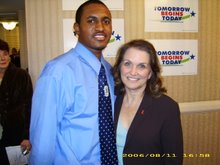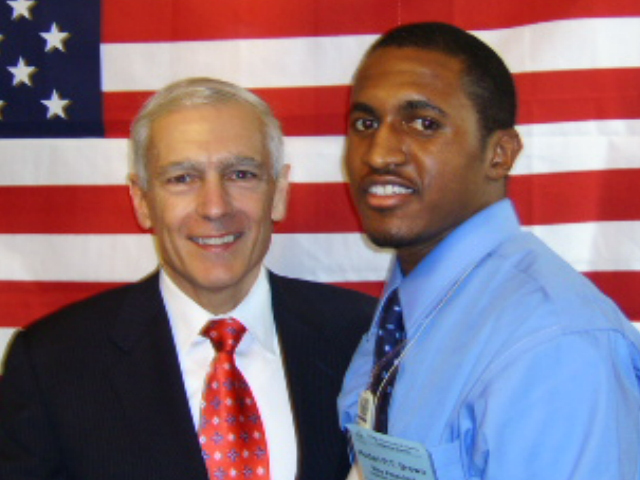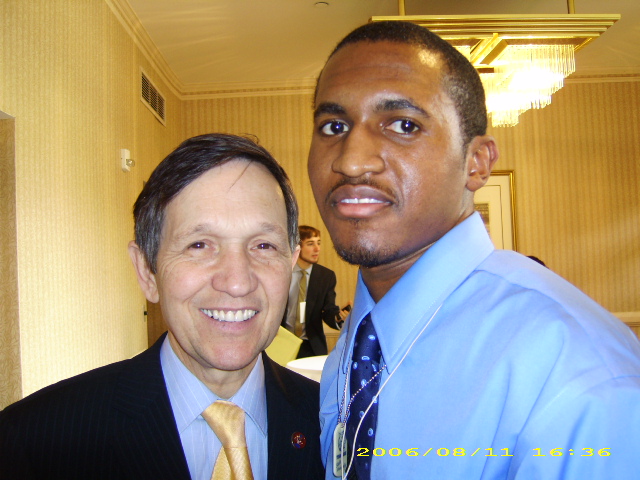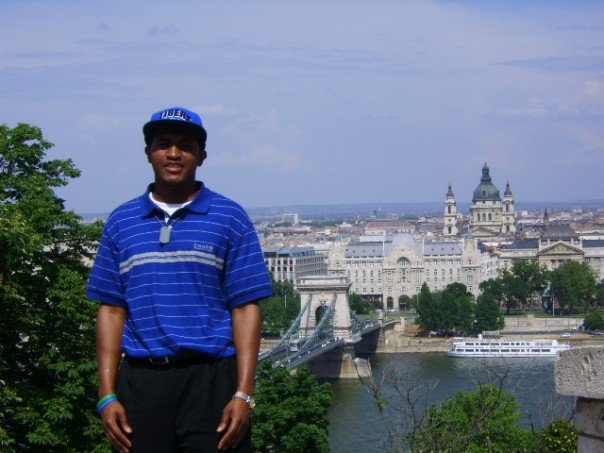
Most banks didn't go out of business or get taken over. Your ATM still spits out cash, and Wall Street seems to be returning to some sense of normalcy. That's obviously good news. And what's even more encouraging is that the age of big bank bailouts is hopefully coming to a close. Treasury Secretary Timothy Geithner said Thursday in an appearance before the Congressional Oversight Panel that it is time to "begin winding down some of the extraordinary support we put in place for the financial system."
Extraordinary support is an understatement. AIG (AIG, Fortune 500) has become a ward of the state. Taxpayers now own a third of Citigroup (C, Fortune 500). And Bank of America (BAC, Fortune 500) has received $45 billion in funding from the Troubled Asset Relief Program, or TARP. But as we all look back on the events of the past year, it's important to remember that not all banks and financial firms got blinded by greed and stung by reckless behavior. It's tempting to demonize the entire banking world. But there are several regional and community banks that had the guts to tell the government that they didn't want any bailout money because they didn't want to be beholden to the Treasury Department. And, perhaps more importantly, they simply didn't need it.
I've dug up, with the help of research available on TARP tracker Bailoutsleuth.com, at least 54 publicly traded banks that explicitly refused to take part in TARP. And it's worth pointing out that several of them are decent-sized. Hudson City Bancorp (HCBK) and People's United Financial (PBCT) are both in the S&P 500. Commerce Bancshares (CBSH), BOK Financial (BOKF) and NY Community Bancorp (NYB) are among the 50 largest banks in the country as ranked by assets, according to figures from the Federal Reserve. That's interesting considering many big-bank executives argued that they only took TARP funds because they were strong-armed into do it and thought not taking the cash would make them look weak and unworthy of government support. That justification sounds pretty bogus now.
Consider this: Shares of the 54 banks that didn't want a bailout are, on average, down just 16% since last September. That's compared to a 30% drop for the KBW Bank Index and 36% plunge for the S&P Regional Bank Index. And why did these TARP-shunning banks hold up better than their peers? They didn't get involved in as much risky subprime lending as other banks. In fact, only three of these 54 banks reported a loss over the past four quarters. What's more, the banks that just said no are, on average, expected to report a 17% increase in profits this year. And the average dividend yield for the group is an impressive 3.3% -- a testament to the fact that many of these banks were not forced to slash their dividends to preserve capital.
Now don't get me wrong. Some people are not suggesting that TARP was a mistake and that the government should have simply let the free markets run amok although much of TARP was wasted particularly the first $350 billion dollars that no one seems to know how it was spent or how the banks used it. In fact a CNN moneyworks correspondent argued a year ago that the bank bailouts were a necessary evil to save the financial sector from a complete meltdown. That CNN correspondent took a lot of flack for that stance, but the CNN correspondent still thinks that the government had no choice but to launch TARP and other government alphabet-soup programs in the wake of Lehman Brother's collapse.
However it should be noted that the CNN correspondent wasn't happy to be putting taxpayer dollars at risk to undo the mistakes that were caused by greed and recklessness. And the handling of the bailouts by both the Bush and Obama administrations has been, to put it mildly, sloppy, according to that same CNN correspondent. But instead of focusing so much attention on what went wrong, the one-year anniversary of Lehman's death is also a good time to remember that many regional banks did the right thing. They stuck to sound lending practices and didn't wind up needing you and me to bail them out. And they didn't get punished for refusing to bow down to Wall Street's myopic short-term obsession with the next quarter's results. By sticking to their guns, they not only continued to make a profit and stay off the government dole, they also rewarded shareholders. Hopefully the banking giants will take notice.
Although I would love to speak good news about the financial crisis, there is also more bad news to the banking crisis since 3 more banks failed. Regulators close banks in Illinois, Minnesota and Washington at a cost of more than $2 billion to the FDIC. Regulators closed one large bank in Illinois and two other smaller financial institutions on Friday, pushing the total number of failures this year to 92, according to the Federal Deposit Insurance Corp. Customers of the banks, however, are protected. The FDIC, which has insured bank deposits since the Great Depression, covers each customer account up to $250,000.
In Illinois, 16 banks have failed so far this year, including Chicago-based Corus Bank, which was closed by the Office of the Comptroller of the Currency on Friday. Corus, which operated 11 branches, had deposits of about $7 billion and total assets of around $7 billion assets, the FDIC said. MB Financial Bank, which is also based in Chicago, will acquire all of the failed bank's deposits and agreed to buy $3 billion of its assets. Much of Corus' assets are condo loans backed by developments, and the FDIC is expected to sell them off within the next 30 days. "This is our third FDIC transaction this year and we are pleased to provide a safe and secure home at MB for Corus customers," said Mitchell Feiger, chief executive of MB Financial, in a statement.
Two smaller banks were also shuttered on Friday night. In Minnesota, Brickwell Community Bank, which operated one branch in Woodbury, was closed by state officials. Mitchell, S.D.-based CorTrust Bank will take over Brickwell's $63 million in deposits and will purchase "essentially all" of its $72 million in assets, the FDIC said. And in Washington state, Venture Bank of Lacy was closed by state regulators. First-Citizens Bank & Trust Company in Raleigh, N.C., took over all of the deposits of Venture Bank. Venture Bank had 18 branches that will reopen Saturday as branches of First-Citizens Bank & Trust Company. As of July 28, Venture Bank had assets of $970 million and deposits of about $903 million. First-Citizens Bank agreed to purchase some $874 million of the assets.
So far this year, the number of banks closed by regulators is nearly four times the number of banks that failed in 2008, and it's the highest tally since 1992, when 181 banks failed. The majority of this year's failures have been small, regional banks that fell victim to losses on real estate and consumer loans as unemployment surged to a 25-year high. The wave of failures is expected to continue, raising concerns about the size of the FDIC's fund. The cost of Friday's bank failures to the FDIC is an estimated $2 billion. Over the next five years, the FDIC expects roughly $70 billion in losses due to the failure of insured institutions.
The government has gotten back hundreds of billions of dollars in bailout loans, but it still has more than $2 trillion to wind down. As government regulators switch from crisis-mode to rescue mode, many of the biggest and most successful bailout programs are well on their way to extinction. But there are plenty of others that are gaining momentum as the economy heads toward a recovery. In fact, the wind-up has nearly cancelled out the wind-down, and the government still has about $2.2 trillion of loans to reclaim.
"These programs were crutches helping banks and institutions get through this crisis," said Larry Kaplan, former special counsel at the Office of Thrift Services and counsel in the banking and financial institutions practice at Paul Hastings. "There are some whose bones have healed, but not everyone's has. The world isn't repaired yet." Still, the Fed, Federal Deposit Insurance Corp. and the Treasury Department have insisted that their rescue initiatives will have to be rolled back or terminated as the recovery gains traction. "Some of these programs still have a long way to go, but others were on an as-needed basis, and we're finding that we don't need them as much anymore," said Dan Clifton, head of policy research at Strategas Research Partners. "But if the government just announced that all these programs ended overnight, the markets would panic."
The timing will be crucial: Pull the rug out from under banks and companies too quickly, and the government could undo much of the stability that the bailouts helped create. Let them linger too long, and massive inflation could take hold. "The emerging confidence and stability of September 2009 is a far cry from the crippling fear and panic of September 2008," Treasury Secretary Tim Geithner told a Congressional Oversight Panel on Thursday. "It is clear that we have stepped back from the brink and that, as the president recently said, we are pointed in the right direction." Here's a look at where some of the key programs stand:
The wind-down
Corporate debt purchases: Demand for commercial paper -- short-term debt that companies issue to finance day-to-day expenses -- came to a screeching halt during the credit crisis. That prompted the Fed to start buying up three-month debt, which helped calm the market. Many businesses were ultimately able to find open market buyers after the first round of debt expired in January. Peaked on Jan. 22 at $350.5 billion. Now at $47.7 billion.
Money market rescue. "Safe as cash" money market funds started quickly losing money after Lehman Brothers' collapse in mid-September 2008. When investors started a run on the money markets, the Fed immediately moved to lend to the funds and to the banks that lend to money markets. That stabilized most of the funds within a month, and the program has now been almost completely wound down. Peaked on Oct. 2: $152.1 billion. Now: $79 million.
Feds profit on bailouts
Discount window for investment banks. The long-time lending facility for commercial banks was opened up to investment banks for the first time in March 2008 in an effort to stave off another Bear Stearns-like collapse. The program soared in the weeks following Lehman's bankruptcy, but ended in May after investment banks were able to find funding in the open markets. Peaked on Oct. 2: $146.6 billion. Now: $0.
Term Auction Facility. TAF began in December 2007 and was the first "bailout" program from the Fed. The government lent set amounts of short-term money through auctions to commercial banks in exchange for hard-to-sell assets like mortgage-backed securities as collateral. The Fed ramped up the effort during the height of the credit crisis, but has since scaled it back as banks have been able to secure funds from one another. Peaked on Nov. 13: $415.3 billion. Now: $212.1 billion.
TARP. Banks started paying back Treasury's capital investments en masse in June, though many experts said it is less a sign of banks' health and more about the negative stigma associated with a government bailout. Peaked on June 16: $436 billion. Now: $372.5 billion.
The wind-up
Fannie and Freddie. The government placed the mortgage finance giants under conservatorship a year ago, sending them $85 billion to stay afloat. But the firms are far from standing on their own two feet again -- and the housing market has yet to show signs of a strong recovery. As a result, the Fed continues to buy up debt and mortgage-backed securities from Fannie (FNM, Fortune 500) and Freddie (FRE, Fortune 500) in an attempt to keep mortgage rates low. $806.3 billion of a possible $1.9 trillion.
Making Home Affordable. Treasury's foreclosure prevention program has helped just 12% of the four million eligible borrowers modify their loans. The administration is pushing servicers to do more after a rocky start prompted numerous complaints. $22.1 billion of a possible $75 billion.
Stimulus. The Recovery Act is the largest federal spending bill ever, but most of that spending will come in 2010. The majority of the upfront payouts came in the form of tax relief and Medicare aid to states. Later this year and into next year, the infrastructure projects will really kick into high gear. $151.4 billion of a possible $787.2 billion.
TALF. With lending to consumers and small businesses still stagnant, the government offered to provide up to $1 trillion in financing to private investors to buy up securities backed by consumer and small business loans. Buyers aren't exactly breaking down the door yet, but the Fed extended the program and hopes to attract more support. $36.3 billion of a possible $1 trillion.
Still with all of this said, it seems that America’s financial crisis is not as good as we would hope unless investors on Wall Street and on Bank Boards decide to change the way they risk and assess risk in this nation. While the Obama administration aims to regulate Wall Street, much of its regulations just gives more power to the Federal Reserve who was is suppose to prevent recessions from happening but since its creation in 1913, our nation has a recession or depression nearly every decade.


























No comments:
Post a Comment